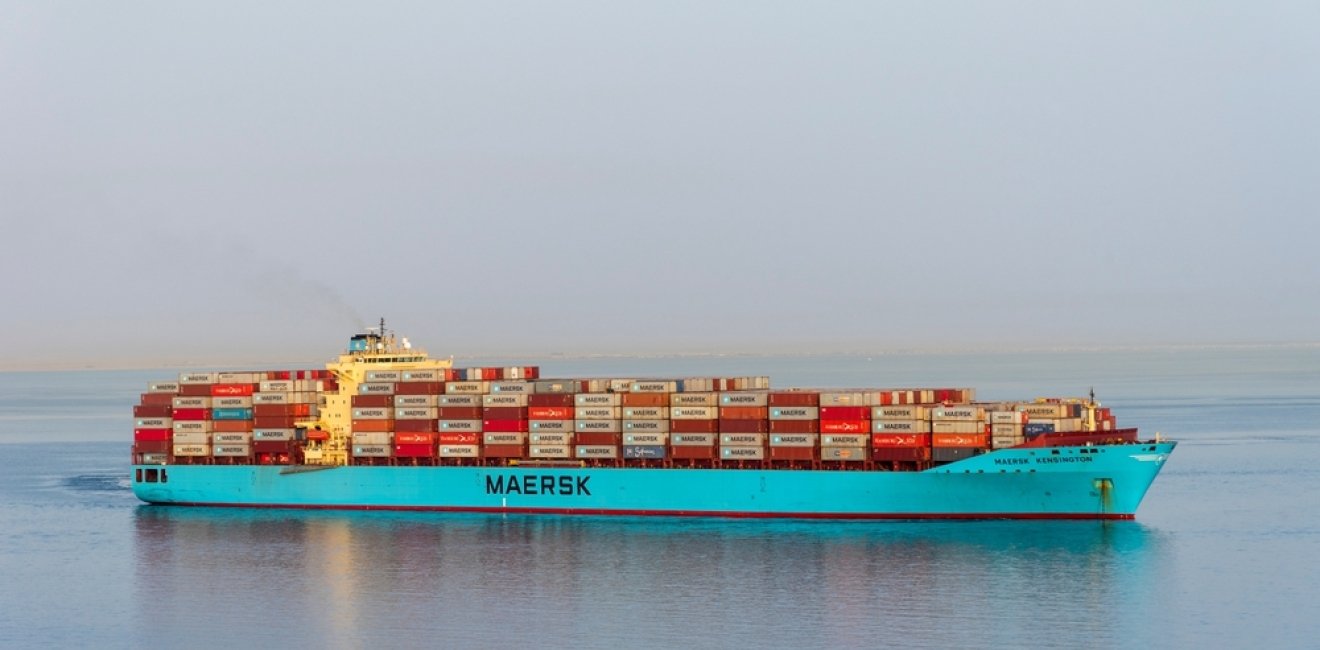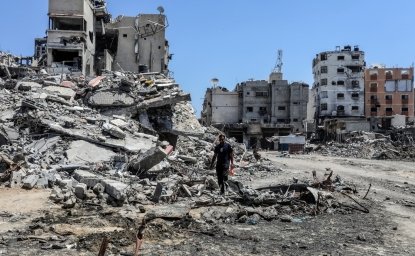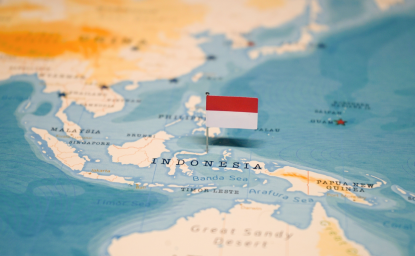The Israel-Hamas War has given birth to a Black Swan in Yemen, where the rebel Houthi government has succeeded against all expectations in largely paralyzing global commercial traffic in the Red Sea. Efforts by US, British, and European Union warships sent to stop Houthi drones and missile attacks on commercial shipping through the strategic international waterway have so far failed and have little prospect for success short of a major escalation.
The Houthis are now threatening to expand their targets to ships plying an alternative route around Africa in the maritime trade between Europe and Asia and even to attack those in the Eastern Mediterranean headed for Israel. They say their attacks, which began in November, are intended to show support for Hamas and the Palestinian struggle for an independent state, but they clearly show signs of a far more ambitious agenda.
Houthi escalation
A Black Swan is the term security analysts use to describe a totally unforeseen and unpredictable event that results in major unanticipated consequences. The emergence of the Houthi missile-and-drone capability as a major factor in Middle East security is just such an event.
Both the Houthi government and the US Central Command (CENTCOM) which is charged with keeping the waterway open escalated their attacks on each other at the end of May. The Houthis targeted six commercial vessels in the Red Sea and, in addition, one each in the Arabian and Mediterranean Seas. None of them reportedly did much damage but illustrated the Houthis’ continuing ability to strike multiple targets even after six months of a US-led campaign to end the threat.
Initially, the Houthis said they were only after Israeli-owned commercial ships on their way to Israeli ports. But they have long since expanded to firing their missiles and drones at many non-Israeli ones, even US, British, and EU warships. In the latest flare-up, the Houthis also declared they had twice targeted, and hit, the USS Dwight D. Eisenhower aircraft carrier, but the Pentagon denied it. Their longest-range ballistic missile is the Toofan, which the US Defense Intelligence Agency estimates can fly 1,200 miles and thus reach the Mediterranean. Iran has provided the Houthis with a score of short- and medium-range cruise and ballistic missiles, plus drones, which they have renamed to hide their origin. They have carried out around 90 attacks afflicting damage to 20 commercial vessels, sunk one and captured another, and claim to have brought down three US MQ-9 Reaper intelligence-gathering drones.
CENTCOM has replied to the recent Houthi escalation with its own. On May 30, it reported it had destroyed eight Houthi “uncrewed aerial vehicles,” or drones, and together with UK warplanes, attacked 13 targets inside “Iranian-backed Houthi terrorist-controlled areas” of Yemen. US strikes inside Yemen of this magnitude have been rare to avoid civilian casualties, but the Houthis claimed this time, 16 Yemenis were killed and 42 others injured. Another press release on June 1 said that CENTCOM forces had shot down two Houthi cruise missiles headed for the destroyer USS Gravely.
The Houthis and Iran
Few, if any, US or Middle East analysts foresaw the Houthis, a Zaidi Shia minority in a Sunni-dominated country, becoming a major factor in Red Sea security. These backward tribesmen took over the capital, Sanaa, in September 2014 and have since consolidated their hold over the most populous northern half of the country bordering on Saudi Arabia. After nine years of civil war, the Houthis still contest control of the entire country; an internationally recognized government is based in Aden in the south, but it has little authority even there.
Whether the recent Houthi escalation has come in response to a request from Iran remains unclear. The Iranians are now in the process of electing a new president after the former one, Ebrahim Raisi, died in a helicopter accident last month. The Houthi government is a stalwart member of the Iran-led “Axis of Resistance” opposing Israel and the US Middle East presence. Still, its interests are at stake, namely winning international recognition and gaining leverage over US-backed Saudi Arabia and Egypt, the two main Red Sea Arab powers.
At this point, the only country recognizing the Houthi government is Iran, which has been the sole provider of its ever more deadly and longer-range drones and missiles.
At this point, the only country recognizing the Houthi government is Iran, which has been the sole provider of its ever more deadly and longer-range drones and missiles. After years of denying this, an official of Iran’s Islamic Revolutionary Guard Corps confirmed in late May that Iran has been supplying the Houthis with its Ghadir anti-ship cruise missile with a 200-mile range.
Impact on global trade
The Red Sea is one of the world’s most strategic waterways, with the Bab el-Mandeb Strait at its southern entrance and the Suez Canal in the north, through which ships travel to reach the Mediterranean Sea. Twelve percent of all seaborne oil passes through these three waterways, according to the US Agency for Energy Information. The International Monetary Fund (IMF) calculates they account for 15 percent of all global maritime trade.
The most affected country is Egypt, which in its last fiscal year (2022-23) earned $9.4 billion from canal tolls, making it one of its three most important sources of foreign revenue earnings (Tourism and remittances from Egyptians working abroad are the other two).
The IMF reported that ship traffic through the Suez Canal dropped by 50% in the first two months of 2024. Another report put the decline at 66% between mid-December and April. The most affected country is Egypt, which in its last fiscal year (2022-23) earned $9.4 billion from canal tolls, making it one of its three most important sources of foreign revenue earnings (Tourism and remittances from Egyptians working abroad are the other two).
The other country that stands to be seriously impacted is Saudi Arabia, which is spending hundreds of billions of dollars building luxury resorts for tourists along the Red Sea coast and building an entire new city called “Neom” near its border with Jordan.
The failure of the Biden administration’s strategy to cope with the Houthi challenge has been largely overlooked because of Washington’s primary focus on the Israel-Hamas War and finding a way to end it. However, the Pentagon has been deeply involved since last December, when it established a special task force to launch Operation Prosperity Guardian to protect commercial shipping from Houthi attacks.
Response from the US and allies
In reality, the US-led campaign to protect Red Sea shipping has been fragmented and gained limited support from its European allies and practically none from its Arab partners. Only Britain has sent warships to operate under Prosperity Guardian, while the European Union created a separate task force named Aspides, the Greek word for “shield.” It currently has four warships in the Red Sea.
Most striking has been the failure of any Arab country other than Bahrain, which hosts the US Fifth Fleet, to associate itself publicly with either operation or to send any ships. This includes Egypt and Saudi Arabia, the two main Red Sea countries with the most at stake in keeping the Red Sea safe for commercial traffic and tourism. But their fear of appearing to help Israel against Hamas has been of even greater concern.
Whether the Houthis will end their Red Sea attacks if and when there is a ceasefire in the Israel-Hamas War remains to be seen.
Whether the Houthis will end their Red Sea attacks if and when there is a ceasefire in the Israel-Hamas War remains to be seen. However, the Houthi government, though unrecognized internationally, has already established itself as a military power to be reckoned with by the United States, the EU, and the Middle East’s two major countries, Saudi Arabia and Egypt.
The consequences of this Houthi Black Swan may soon become more apparent in Washington. The Biden administration says it is close to reaching a bilateral security agreement with Saudi Arabia to protect it from Iran. The details of the proposed security accord have not yet been made public, so it is not known whether a US security guarantee would extend to protecting Saudi Arabia from Houthi as well as Iranian attacks. But the Houthis and Iran are close allies and have fired hundreds of missiles at Saudi Arabia’s oil and military facilities during the nine-year-long Yemeni civil war.
In any case, the current standoff between CENTCOM and the Houthis should serve as a sobering reminder of the risks and complexities awaiting the Biden administration and Congress as soon as the proposal for a US-Saudi security accord becomes public and possibly needs Senate ratification.
The views expressed in this piece are those of the author and do not express the official position of the Wilson Center.






